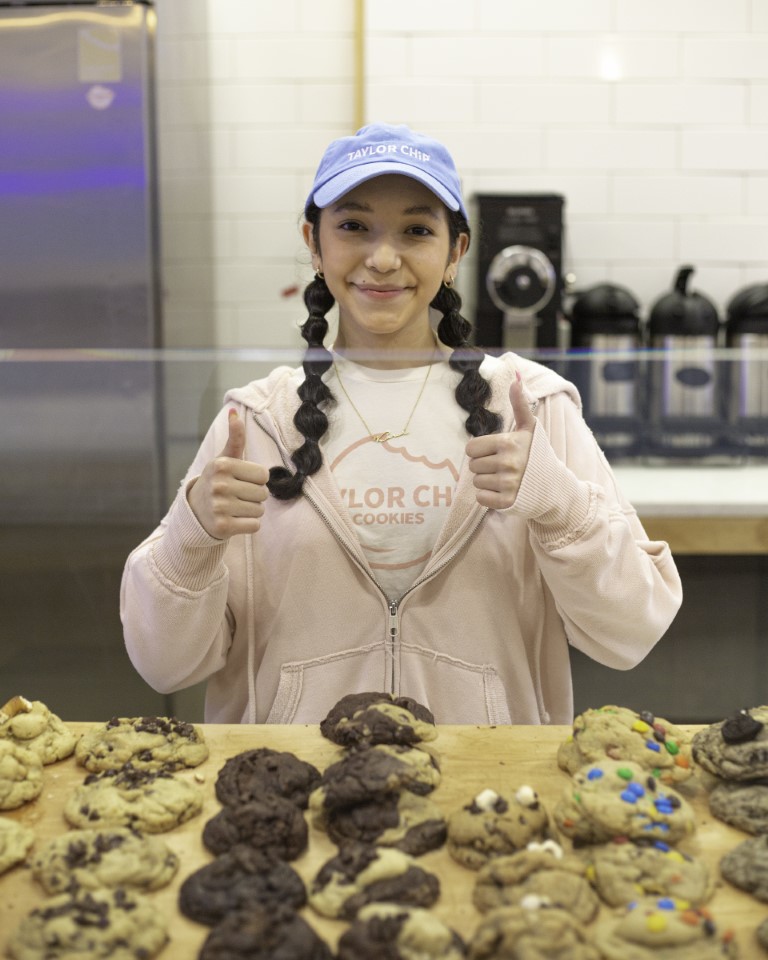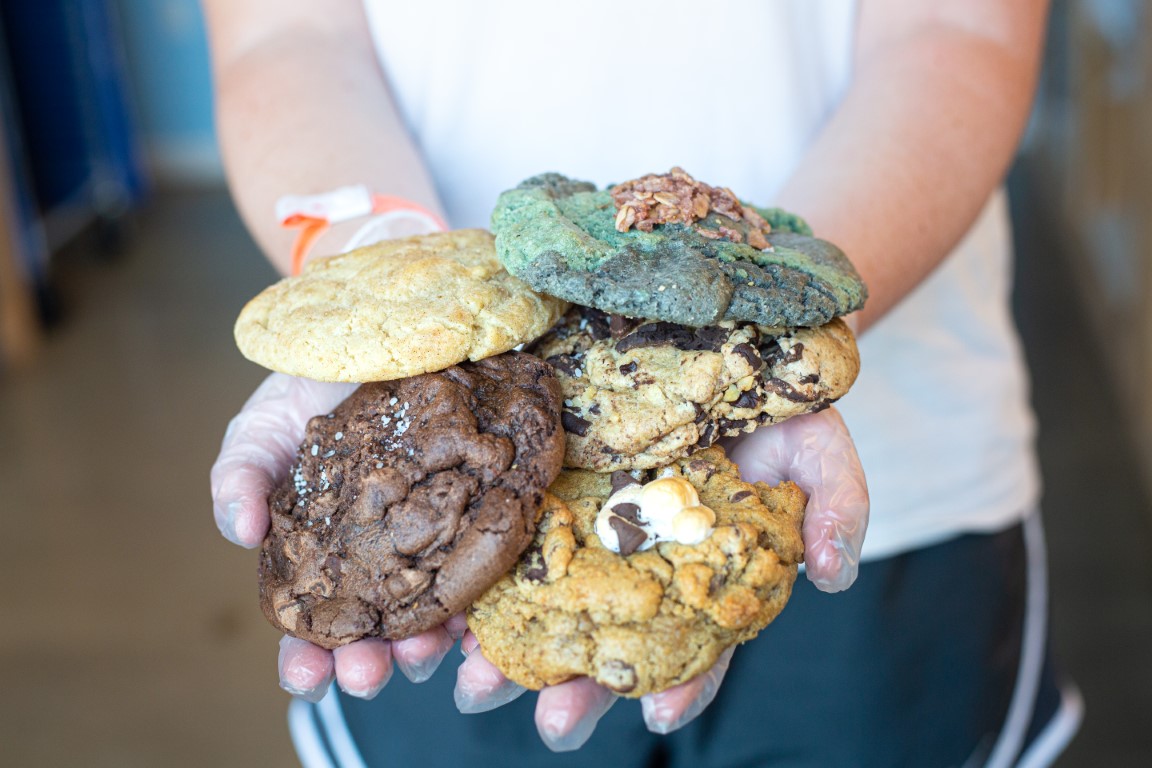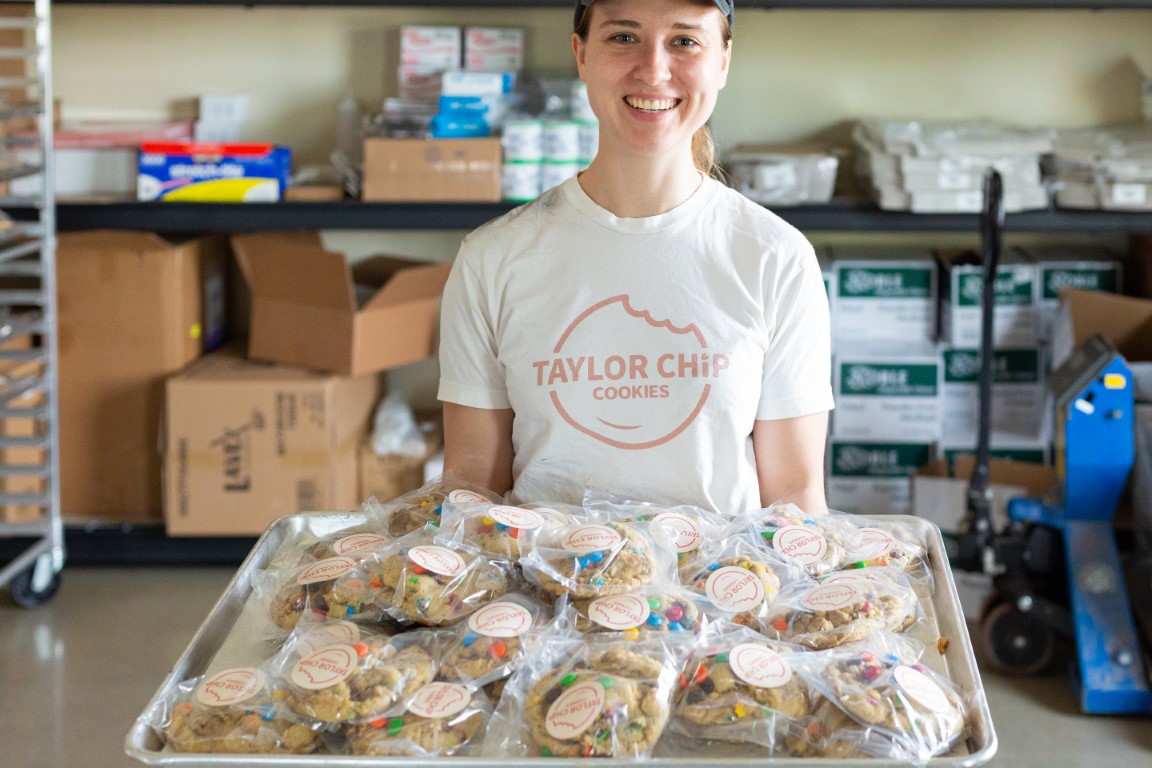When you're choosing between light and dark brown sugar for cookies, focus on how each influences the flavor and texture. Light brown sugar, with its lower molasses content, offers a mild caramel flavor and produces softer, chewier cookies, making it ideal for recipes like classic chocolate chip cookies. On the other hand, dark brown sugar contains more molasses, resulting in a richer, more intense flavor and denser cookie consistency, perfect for hearty recipes like gingerbread. Considering these differences can help you decide which sugar suits your baking needs, and there's certainly more to explore about how sugar affects your cookies.
Key Takeaways
- Light brown sugar is ideal for soft, chewy cookies like chocolate chip, providing a balanced sweetness without overpowering flavors.
- Dark brown sugar enhances rich flavors in cookies such as gingerbread and molasses, contributing to a more intense taste and moisture retention.
- Light brown sugar encourages more cookie spread, resulting in thinner, softer textures, while dark brown sugar produces denser, thicker cookies.
- Substituting light for dark brown sugar may alter cookie texture and flavor; adjustments might be necessary for desired results.
- Light brown sugar is beginner-friendly, adding a mild, nutty essence, while dark brown sugar improves moisture and texture with its higher molasses content.
Understanding Brown Sugar Basics
When you're choosing between light and dark brown sugar for your cookies, it's crucial to understand their compositions. Light brown sugar contains less molasses than dark brown sugar, which results in a milder flavor and lighter color. In contrast, dark brown sugar has a higher molasses content, giving it a richer taste and deeper hue, which can greatly influence the texture and taste of your cookies.
Defining Light vs Dark Brown Sugar Compositions
Brown sugar, a staple in many baking recipes, comes in two main varieties: light and dark. Light brown sugar consists of sugar crystals coated in a thin layer of molasses. It's fundamentally granulated sugar with a lower molasses content, leading to complex flavors that are sweet and mild. In contrast, dark brown sugar has a darker color due to a higher concentration of molasses, resulting in a distinct flavor profile that's richer and more pronounced. The moisture content in dark brown sugar is also slightly higher, making it feel denser and stickier than its lighter counterpart. Both types offer unique characteristics that can enhance your baking, depending on the depth of flavor you're seeking in your cookies.
Key Differences in Molasses Content
Understanding the key differences in molasses content between light and dark brown sugar can greatly influence your baking results. Light brown sugar contains a lower level of molasses, resulting in a milder molasses flavor and a softer texture. In contrast, dark brown sugar has a higher level of molasses, offering a deeper, richer flavor and more intense aroma. This variance affects not only the taste but also the texture of your cookies.
In baking recipes, consider these distinctions:
- Light brown sugar: Offers a subtle molasses flavor and softer texture.
- Dark brown sugar: Provides a more intense flavor and firmer texture.
- Cookie ingredient lists: Specify which sugar to use for desired taste.
- Differences in texture: Affect the final product's chewiness or crispness.
Select your sugar carefully to align with your desired cookie outcome.

Choose Your Own Delightfully Perfect Cookies.
With almost 30 flavors to choose from, you can make your box as unique as you are.
Impact on Cookie Characteristics
When you're choosing between light and dark brown sugar for your cookies, it's essential to take into account how each type affects moisture and texture. Light brown sugar tends to create cookies that are softer and lighter in flavor, while dark brown sugar adds a deeper molasses taste and can result in a denser, chewier texture. Additionally, the type of sugar you use influences how much your cookies spread during baking, with the higher molasses content in dark brown sugar often leading to less spread and more compact cookies.
Moisture and Texture Effects
Imagine sinking your teeth into a cookie with just the right balance of chewiness and moisture. The choice between light and dark brown sugar can greatly affect the moisture content and texture of your cookies. Brown sugar, with higher moisture content, tends to create cookies with chewy textures and a moist texture. Here's what you can expect:
- Chewy Textures: The increased moisture content from brown sugar helps maintain a soft bite.
- Moist Texture: Your cookies will have a satisfying, moist texture that doesn't dry out quickly.
- Denser Texture: Expect a denser texture when using more brown sugar due to its moisture.
- Baking Process: A combination of sugars in the cookie dough can help balance the difference in moisture content, ensuring the desired texture when baking cookies.
Flavor Profile Variations
Brown sugar isn't just about moisture; it's also a key player in the flavor profile of your cookies. Light brown sugar provides a light flavor with a subtle molasses undertone, making it an ideal flavor choice for cookies where you want the other ingredients to shine. In contrast, darker sugar delivers a stronger flavor, imparting a deeper color and a more pronounced molasses flavor to the cookies. This choice in sugar becomes a central point in the brown sugar debate, as each type offers unique contributions to the cookie's intricate color and taste profile. By understanding these differences, you can tailor your cookie recipes to achieve the perfect balance of flavors, enhancing your baked goods to suit your preferences.
Spread and Density Differences
As you engage yourself in the domain of cookie baking, you'll quickly reveal how the type of brown sugar you use can affect the spread and density of your cookies. Light color and dark color sugars create varying degrees of difference in cookie characteristics. The lighter variety tends to produce cookies with a crisp-yet-chewy texture, while dark varieties often result in a moist cookie with a crumbly texture. Understanding the nuances can help you achieve desired results:
- Light Color: Encourages more spread, resulting in a thinner cookie.
- Dark Color: Yields a denser, thicker cookie.
- Spread and Density Differences: Influenced by sugar's molasses content.
- Baking Time: Adjusted based on the sugar type to perfect texture.
Knowing these factors, you can tailor your baking to match your preferences.
Making the Right Choice for Your Cookies
When deciding between light and dark brown sugar for your cookies, consider the flavor and texture you want to achieve. Light brown sugar is best for recipes where you desire a milder sweetness and a subtle caramel flavor, making it ideal for classic chocolate chip or sugar cookies. On the other hand, dark brown sugar, with its rich molasses content, is perfect for cookies where a deeper, more intense flavor is welcomed, such as gingerbread or molasses cookies, and if substituting one for the other, be prepared to adjust your recipe slightly to maintain the desired taste and texture.
Best Uses for Light Brown Sugar in Cookies
If you're aiming for soft and chewy cookies with a hint of caramel-like flavor, light brown sugar is your go-to sweetener. Its subtler flavor profile makes it a favorite for chocolate chip cookies, adding depth without overwhelming other ingredients in your cookie recipe. Professional bakers often prefer it for these reasons, understanding its role in creating perfect air pockets when mixing butter with sugar. Here's how to apply light brown sugar in your baking:
- Chocolate Chip Cookies: Use it to enhance the classic taste without overpowering.
- Conventional Cookie Dough: Substitute a cup of sugar with light brown sugar for a softer texture.
- Baking Prowess: Achieve a more balanced sweetness in your cookies.
- Subtler Flavor: Perfect for recipes that need gentler sweetness.
Ideal Applications for Dark Brown Sugar
While light brown sugar offers a gentle touch, dark brown sugar packs a punch with its more intense molasses flavor. This makes it ideal for recipes where you want rich flavors and a deeper molasses flavor to shine. In a chocolate chip cookie recipe, dark brown sugar enhances the caramel flavor, adding depth to your baking operation. The sugar-making process leaves it with a heavier molasses flavor, perfect for creating moist and chewy textures in brown sugar cookies. When crafting a gingerbread cookie recipe, dark brown sugar's strong profile complements spices beautifully, creating a harmonious blend. By understanding the unique qualities of dark brown sugar, you can make informed decisions and raise your cookies to new levels of flavor.
Substitution Guidelines and Adjustments
Choosing between light and dark brown sugar for your cookies isn't just about flavor—it's also about texture and appearance. When you're faced with the need to make substitutions, understanding the differences between light and dark varieties is essential. If you're out of brown sugar, an all-purpose brown sugar substitute can be made by mixing white sugar with a tablespoon of molasses. Keep in mind these guidelines:
- Lighter Flavors: Use light brown sugar for a milder flavor and softer texture.
- Obvious Sweetness: Dark brown sugar offers a richer taste and more obvious sweetness.
- Alternative Sugars: Consider honey or maple syrup for alternative sugars.
- Cookie Formula: Adjust your cookie formula to balance the level of sweetness desired.
These choices guarantee your cookies turn out as expected.
Popular Cookie Recipes by Sugar Type
When choosing between light and dark brown sugar for your cookie recipes, you'll find that each type brings its own unique qualities to the table. Light brown sugar is often favored in recipes like chocolate chip cookies and snickerdoodles, where a milder molasses flavor enhances the overall sweetness. On the other hand, dark brown sugar is perfect for classics such as ginger snaps and molasses cookies, offering a richer, more intense taste and a deeper color.
Light Brown Sugar Cookie Favorites
Ever wondered why some cookie recipes specifically call for light brown sugar? Light brown sugar is a common choice for sugar cookies, offering a slightly nutty flavor and a lighter color. It's a great option for novice bakers looking to create a flavorful cookie with simple baking tools. This type of sugar is less refined than common table sugar, adding depth to the ingredients in baking. Here's a glimpse of why you might prefer it:
- Sugar Cookies: Light brown sugar helps create a softer, chewy texture.
- Nutty Flavor: It imparts a mild, nutty essence, enhancing the cookie's taste.
- Lighter Color: Achieves a golden hue, appealing to the eyes.
- Beginner-Friendly: An easy ingredient for novice bakers to handle confidently.
Dark Brown Sugar Cookie Classics
Why does dark brown sugar make such a difference in cookie recipes? It's all about the rich, strong flavors that come from the cane molasses present in dark brown sugar. This type of sugar imparts a deeper, more bitter molasses taste, giving dark brown sugar cookie classics their unique appeal. The increased dose of molasses not only enhances the flavor but also contributes to the intense color and characteristic color of these cookies. Unlike light brown sugar, dark brown sugar provides an ideal color and a brown sugar shine, making a considerable difference in appearance. When you use dark brown sugar, your cookies take on a darker shade, perfect for recipes that demand a bolder, more pronounced sweetness.
Our Journey from Home Bakers to Cookie Experts
At Taylor Chip, our expertise in cookie baking isn't just theoretical—it's born from years of hands-on experience and passionate experimentation. Since 2015, we've dedicated ourselves to understanding the intricate science of cookie baking, particularly the crucial role of ingredients like brown sugar in creating the perfect texture and flavor profile. What started as date night baking sessions transformed into a deep, technical understanding of cookie chemistry and baking techniques.
Our journey to perfect the ideal cookie involved countless hours of testing different sugar combinations and ratios. Through this process, we gained firsthand experience with how various types of brown sugar affect cookie characteristics, from spread and density to moisture retention and flavor complexity. This practical knowledge, combined with our unwavering commitment to quality, has enabled us to develop expert insights into the nuances of cookie baking. When we discuss the differences between light and dark brown sugar, we're sharing knowledge gained not just from research, but from years of hands-on experimentation and refinement in our own kitchen.
Frequently Asked Questions
Can I Substitute White Sugar for Brown Sugar in Cookie Recipes?
You can substitute white sugar for brown sugar in cookie recipes. However, you'll miss the molasses flavor and added moisture. To mimic brown sugar, mix white sugar with a small amount of molasses for better results.
How Does Brown Sugar Affect Cookie Shelf Life?
Brown sugar's moisture helps keep cookies soft and chewy, extending their shelf life. You'll notice they stay fresher longer than cookies made with white sugar, which tend to dry out more quickly. Store them in an airtight container.
Does Brown Sugar Impact Cookie Texture When Stored in Humid Climates?
In humid climates, you'll notice brown sugar makes cookies softer and chewier. The moisture in the air keeps the sugar from hardening, so your cookies stay fresh longer. Store them in airtight containers for best results.
Are There Any Health Differences Between Light and Dark Brown Sugar?
You might wonder about health differences between light and dark brown sugar. Both have similar nutritional values. Dark brown sugar contains slightly more molasses, offering a minor increase in minerals like calcium and iron, but it's negligible.
How Does the Origin of Brown Sugar Affect Its Quality?
The origin of brown sugar can impact its quality due to variations in production methods and source materials. When you choose sugar sourced from reputable regions, you often get better texture and flavor, enhancing your baking results.
Conclusion
To summarize, choosing between light and dark brown sugar for your cookies greatly impacts their flavor and texture. Light brown sugar provides a milder, caramel-like taste and a softer texture, while dark brown sugar offers a richer, more intense flavor with a denser consistency. Consider the specific characteristics you desire in your cookies and experiment with both types to find your preferred balance. Ultimately, understanding these differences will guide you in crafting the perfect cookie to suit your taste.










